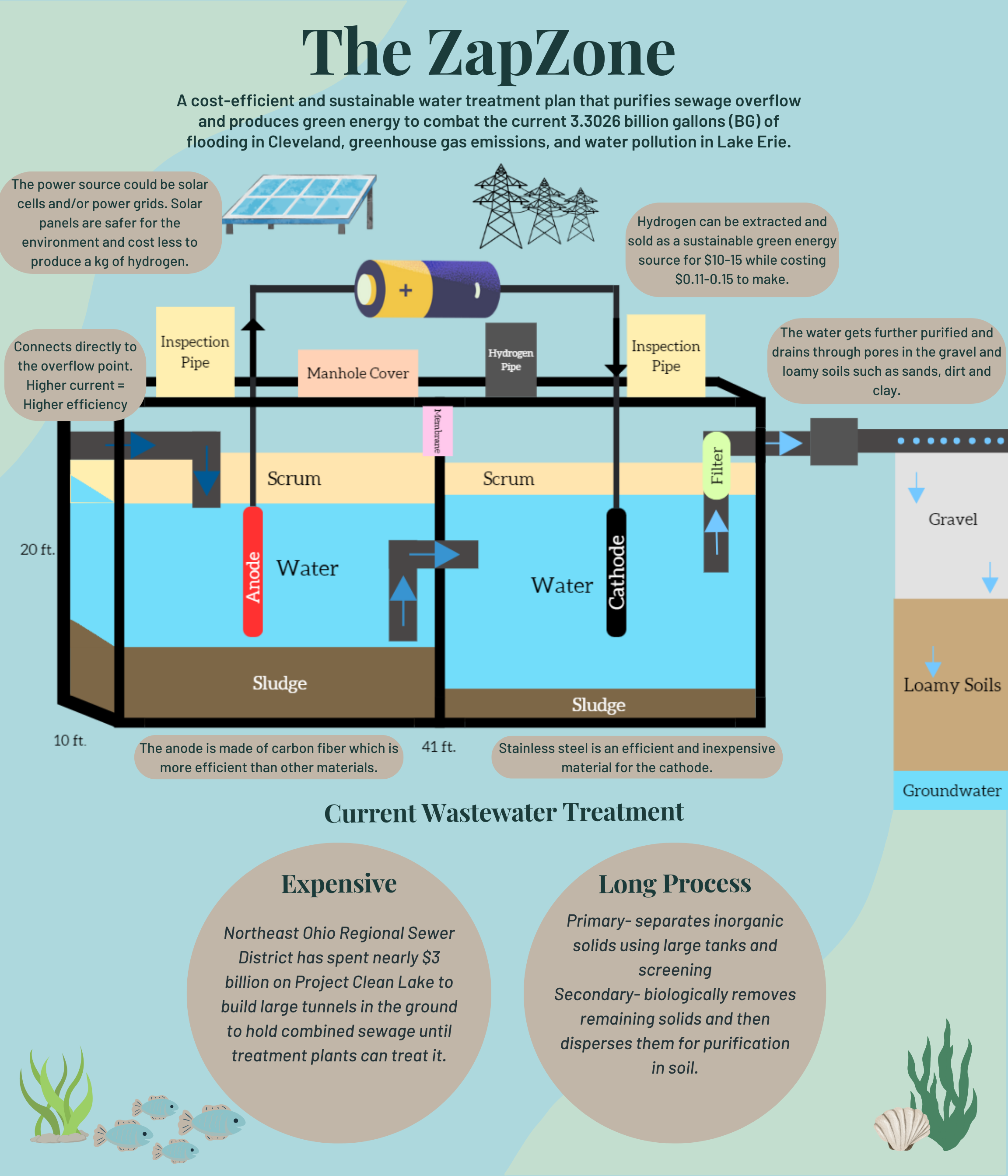Cleveland’s sewage system is inefficient at dealing with sewage overflow and harms the environment daily. Nearly 5 billion gallons of untreated sewage water are discharged into Lake Erie every year. When the sewers get too full, the combined sewage overflow points open for the untreated water to flow directly into Lake Erie, causing immediate and long-term contamination. Cleveland has spent over $3 billion to create tunnels that hold excess water, yet there is no purification until the treatment plants are available. The “ZapZone” is a modified dual-chambered septic tank system with a Proton Exchange Membrane (PEM) Electrolyzer. The tank filters grey and black water using anaerobic bacteria while the electrolyzer uses an electric current to split water molecules into hydrogen and oxygen. The gas atoms rise to the top of the tank and pass through the PEM membrane, letting only hydrogen through. Hydrogen is a sustainable green energy source used as mechanical, electrical, or thermal energy providing a return on investment. A routine to monitor and empty the sludge must be enforced to prevent overflow. Cleveland has already spent billions of dollars, so “ZapZone” is a cost-efficient solution that makes a profit and saves Cleveland from water pollution and diseases.
Contact us
Thank you for your interest in contacting Future Engineers. We look forward to connecting with you!
General Inquiries
support@futureengineers.orgSponsorship Inquiries
sponsor@futureengineers.org
